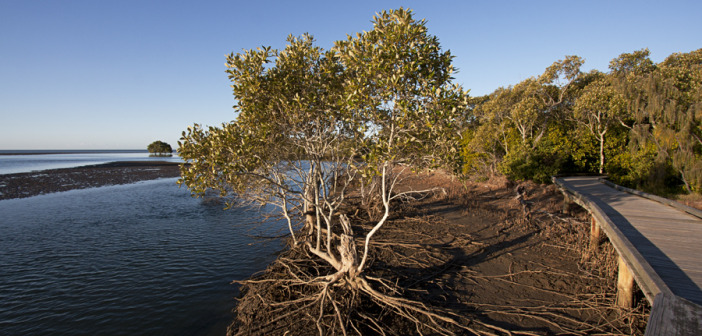Boondall Wetlands are located just 15km north of Brisbane’s CBD, on the edge of Moreton Bay, a declared Ramsar wetland site. The wetlands are comprised of more than 1,000 hectares of tidal flats, mangroves, saltmarshes, melaleuca wetlands, grasslands, open forests and woodlands and provide essential habitat and refuge for a diversity of both resident and migratory fauna. Of the 42 international migratory shorebirds recorded in Australia, 32 have been recorded in the area. Aboriginal Australians have a long and continuing connection with the wetlands, with the site encompassing campsites and ceremonial grounds. After European settlement, parts of the wetland were acquired by the Catholic Church, who cut timber, grew small crops and grazed cattle. By the 1960s, the land had been purchased by Brisbane City Council. In 1970s and 1980s, the wetlands were planned for development. However, public concern resulted in the wetlands being declared a reserve in 1990. The Boondall Wetlands Environment Centre opened in 1996 and is located within the wetlands. The Environment Centre provides education to schools and the general public on the environmental and cultural significance of the site and the importance of preserving wetland areas such as Boondall. Today the wetlands provide important ecosystem services to the greater Brisbane community, particularly in the form of water purification, culture and recreation. Unfortunately, however, with it’s close proximity to human settlements and the Port of Brisbane, the wetland continues to face pressure from human activities.
Boondall Wetlands, Brisbane, Australia
1
Share.



